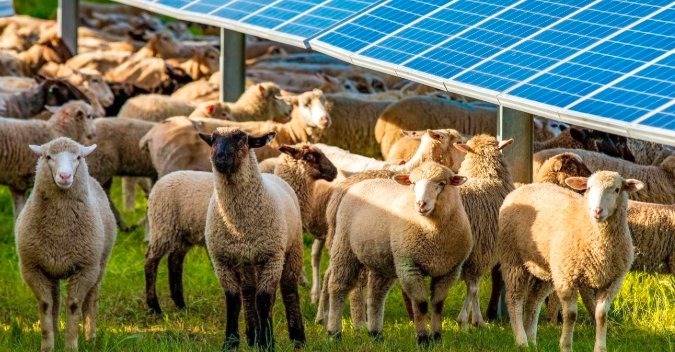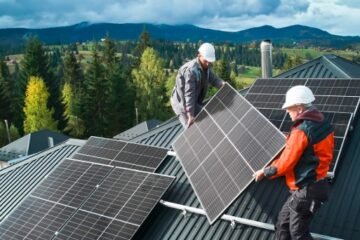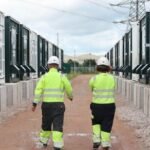A remote Scottish island is about to host a landmark in the country’s clean energy journey.
The Isle of Arran, often celebrated for its scenic beauty and ecological diversity, is now making headlines for a different reason: it’s home to Scotland’s largest fully community-owned solar farm, the Glenkiln Solar Project. This £5 million initiative is being led by Arran Community Renewables (ACR), a local Community Benefit Society, and has just secured planning approval.
If completed on schedule by 2027, Glenkiln could become a national benchmark—not only in terms of scale but also for its model of community participation and land stewardship.
An 8.6-Hectare Blueprint for Local Energy
The Glenkiln solar farm will feature:
-
10,000 solar panels
-
8.6 hectares (around 20 acres) of land
-
Power capacity of 6 megawatts
-
Enough generation for 1,250 households annually
But the project’s ambition extends far beyond raw power output. The proposal emphasizes biodiversity, continued agricultural use, and local ownership as central pillars. Sheep grazing will continue alongside solar production, and the project’s layout is designed to preserve the island’s natural character.
“The solar farm will complement our existing hydro scheme perfectly,” said Kenneth Bone of Glenkiln Farm, who is leasing the land to ACR. “Hydro during wet periods, solar in drier spells.”
With the combined effect of solar and hydro schemes, Bone’s land could become a microcosm of Scotland’s net-zero future.

The Path to Net-Zero, Island by Island
Scotland has pledged to reach net-zero emissions by 2045, five years ahead of the UK’s target. While large-scale offshore wind has driven much of the progress, solar development—particularly in rural or island contexts—has faced public scrutiny.
Concerns about land use, visual impact, and weather reliability often dominate local discourse. Some argue that cloudy skies and unpredictable sun patterns make solar less dependable than other renewables.
ACR is attempting to counter that narrative through community control and transparency. Their vision is to build not just energy infrastructure, but trust.
“People are rightly cautious about large energy developments imposed from above,” said Chris Grainger, ACR Director. “But this is different. It’s by the community, for the community.”
The Numbers and the Payback
If all goes to plan, ACR will launch a community share offer to help raise construction financing and expand local participation. Profits from the solar farm will be reinvested into the island economy, with returns flowing directly back to residents via community initiatives.
The £5 million project, which translates to roughly $6.48 million, is also expected to boost energy resilience on Arran. Like many islands, Arran faces higher energy costs and more frequent supply disruptions. Local generation is seen as a way to stabilize prices and increase independence.
“This project is a stellar example of a community taking the lead,” said Morven Lyon, Head of Democratic Finance at the Development Trust Association Scotland (DTA Scotland). “Long-term benefits will be shared equitably and sustainably.”
Context: The Energy Transition’s Next Frontier
Scotland’s only oil refinery, Grangemouth, is expected to shut within the next few years. In parallel, offshore wind continues to expand with massive multibillion-pound projects like ScotWind, while new hydrogen hubs are being explored.
But community-level renewables—particularly solar and hydro—are increasingly viewed as essential for inclusive energy transformation. Glenkiln is the first project from ACR, but could signal a new generation of bottom-up energy enterprises.
The DTA, which supports dozens of community benefit societies across Scotland, views Glenkiln as a prototype for energy democracy—where locals are not just consumers but owners and decision-makers.
Skepticism, Slowly Turning to Support
Not all are convinced. A minority of residents have voiced concerns about landscape impact and long-term viability, especially given Scotland’s famously rainy climate.
But local support has strengthened as ACR has emphasized transparency and ecological sensitivity. The landscape impact assessment, made publicly available, includes photorealistic renderings and biodiversity plans to reassure skeptics.
Even some who were initially cautious now see it differently.
“It’s not about covering the island in panels,” one resident said. “It’s about owning our future. And that’s powerful.”
Looking Ahead: Construction, Then Connection
With planning approved, ACR’s next major task is securing finance and launching their share offer. Construction could begin as early as late 2026, with full operations in 2027.
If successful, Glenkiln will be more than just a power plant. It’ll be a symbol—of community agency, of practical climate action, and of what happens when local voices lead national change.


















